Japan 2018
Today was Sunday and we set out to take the chikatetsu -subway- to Meiji Jingu - the Meiji Shinto Shrine in the heart of Tokyo. Located in Shibuya, the shrine grounds and gardens encompass hundreds of hectares in central Tokyo. The shrine is dedicated to the spirits of Emperor Meiji (1867 - 1912) and his wife, Empress Shoken. The construction of the shrine began in 1915, using Japanese cypress and copper. It was completed in 1921 and the grounds were officially finished by 1926. Meiji Shrine is the most popular location in Japan for hatsumode - New Year celebration visits. Lesley had been there during these very busy times in years past when living in Tokyo.
There is an inner precinct and an outer precinct and the first structure that appears on the wide forest pathway is the huge torii gate which is meant to symbolically mark the transition from the mundane to the sacred. It always identifies a Shinto shrine.
Within the inner precinct of Meiji Shrine are the vast shrine buildings. Shinto priests who perform ceremonies and young 'maidens' who sell amulets and charms wear traditional dress and can be seen in the inner precinct. On this day we didn't venture into the main shrine area as
Day Four - Meiji Shrine
September 09, 2018
|
Shibuya, Tokyo
Today was Sunday and we set out to take the chikatetsu -subway- to Meiji Jingu - the Meiji Shinto Shrine in the heart of Tokyo. Located in Shibuya, the shrine grounds and gardens encompass hundreds of hectares in central Tokyo. The shrine is dedicated to the spirits of Emperor Meiji (1867 - 1912) and his wife, Empress Shoken. The construction of the shrine began in 1915, using Japanese cypress and copper. It was completed in 1921 and the grounds were officially finished by 1926. Meiji Shrine is the most popular location in Japan for hatsumode - New Year celebration visits. Lesley had been there during these very busy times in years past when living in Tokyo.
There is an inner precinct and an outer precinct and the first structure that appears on the wide forest pathway is the huge torii gate which is meant to symbolically mark the transition from the mundane to the sacred. It always identifies a Shinto shrine.
Within the inner precinct of Meiji Shrine are the vast shrine buildings. Shinto priests who perform ceremonies and young 'maidens' who sell amulets and charms wear traditional dress and can be seen in the inner precinct. On this day we didn't venture into the main shrine area as
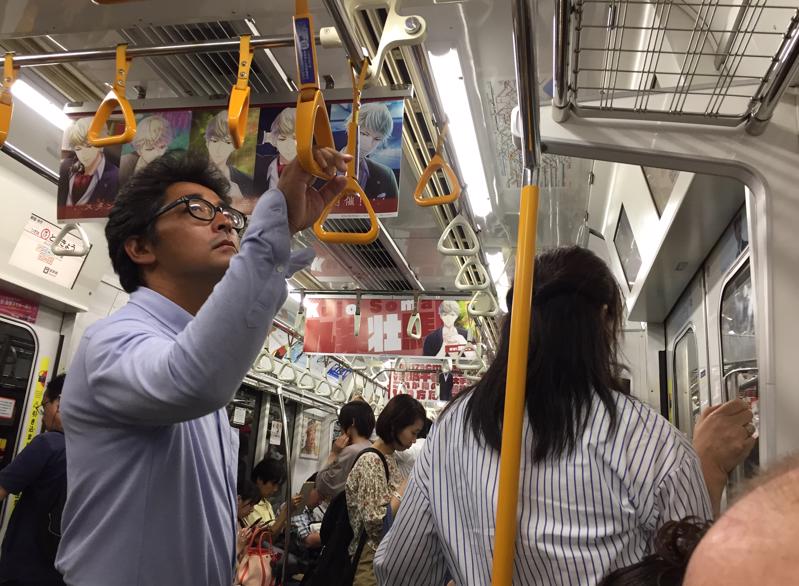
we knew we'd be here again on the last day with our tour group from the cruise.
Just inside the entrance to the shrine we found large barrels of wine on display - burgundy - which were a gift from France to be consecrated at the shrine. They were offered by the celebrated wineries of Bourgogne.The Meiji period was an enlightened period where the idea was to learn from the best of Western culture and civilization while keeping Japan's age-old spirit and traditions. Emperor Meiji led the way by embracing many features of western culture in his personal life, such as shearing his topknot and donning western clothing. He also tried western food and in particular enjoyed western wine with it.
We decided to visit the Iris Garden so paid a fee to enter this area. The Meiji Jingu garden is the only part of the inner precinct that had existed long before the building of the shrine. Emperor Meiji

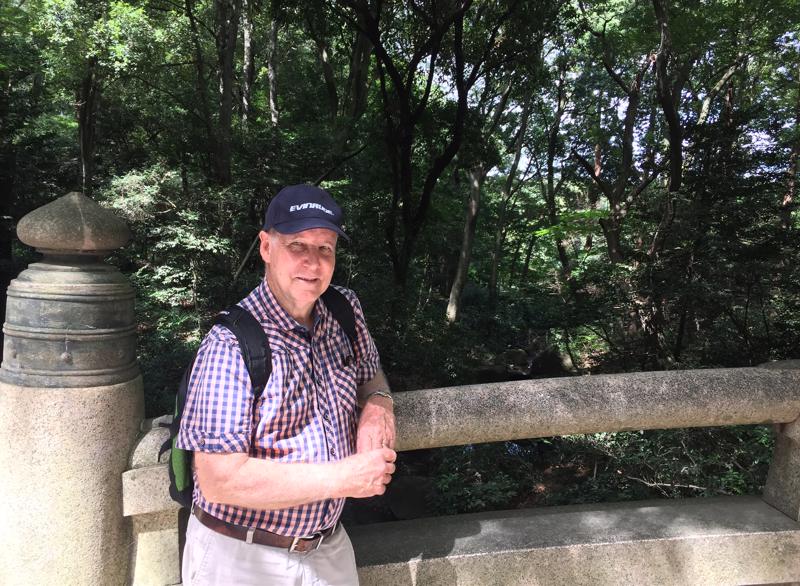
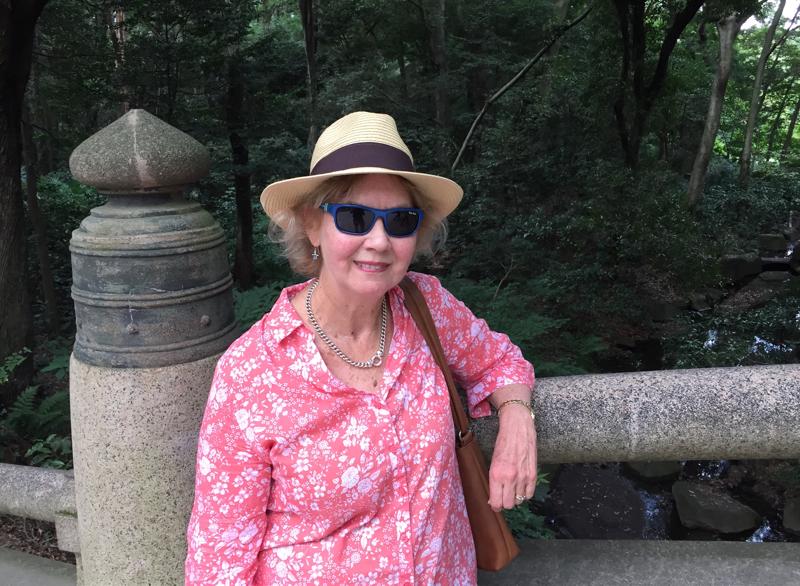
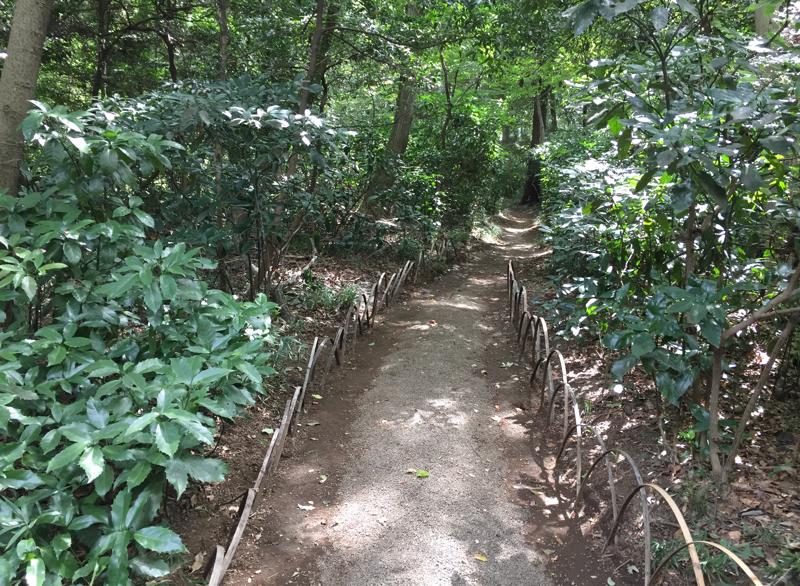
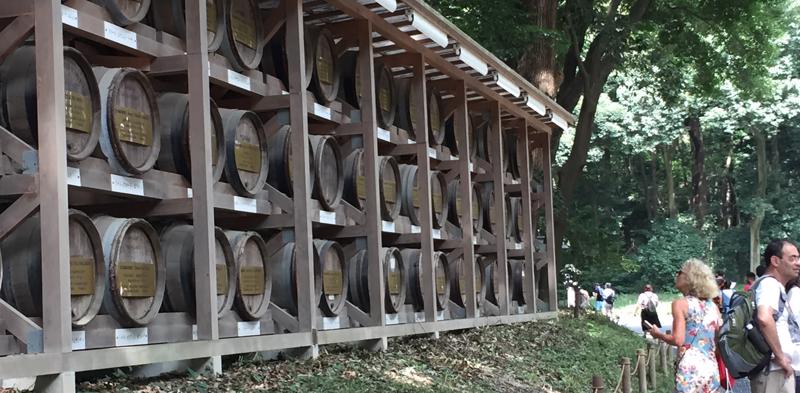
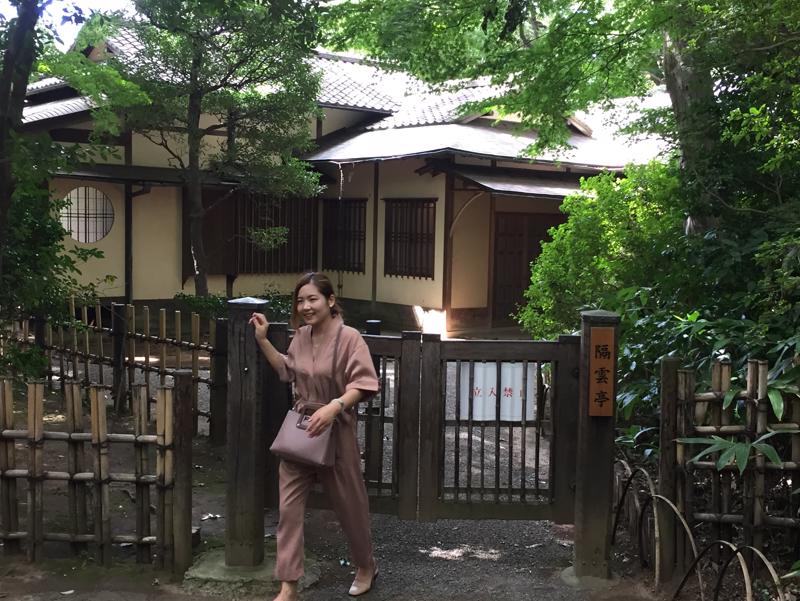
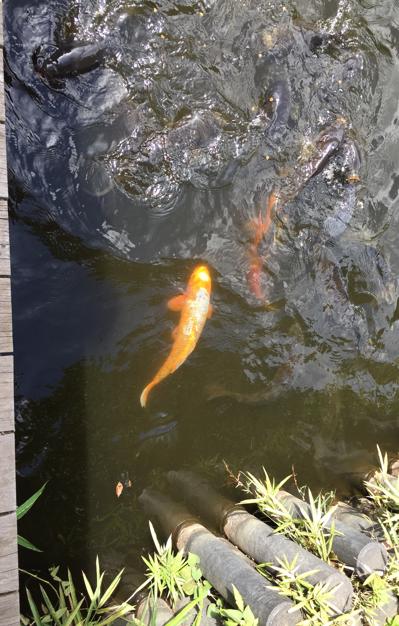
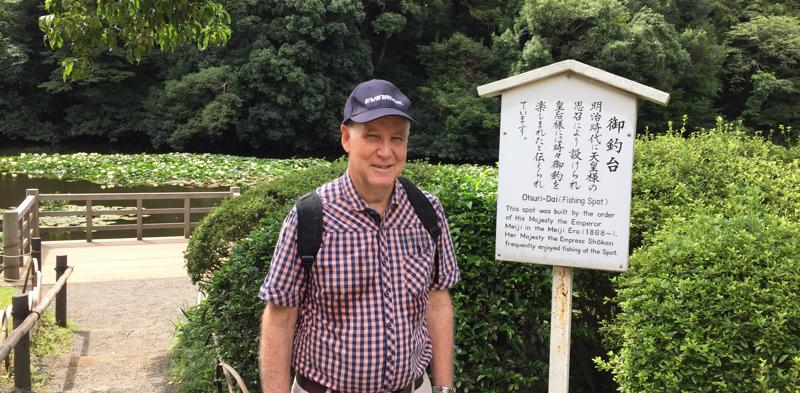
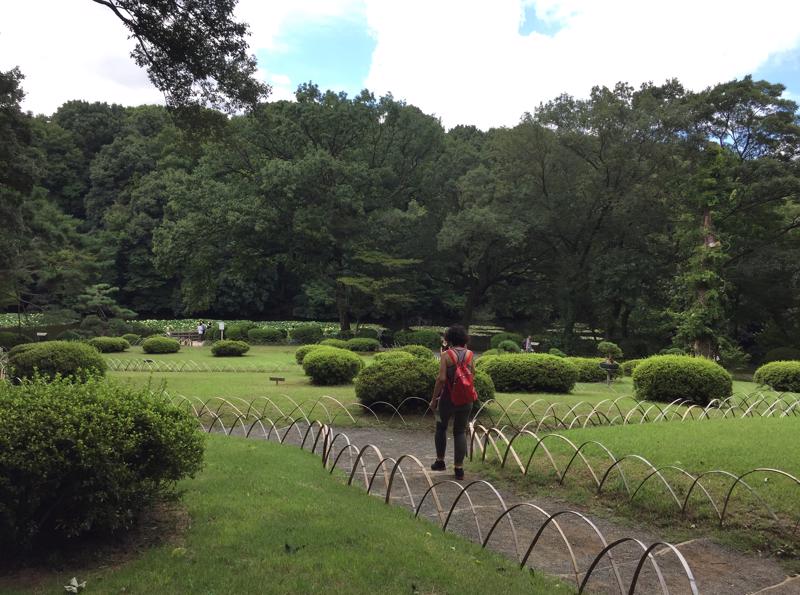
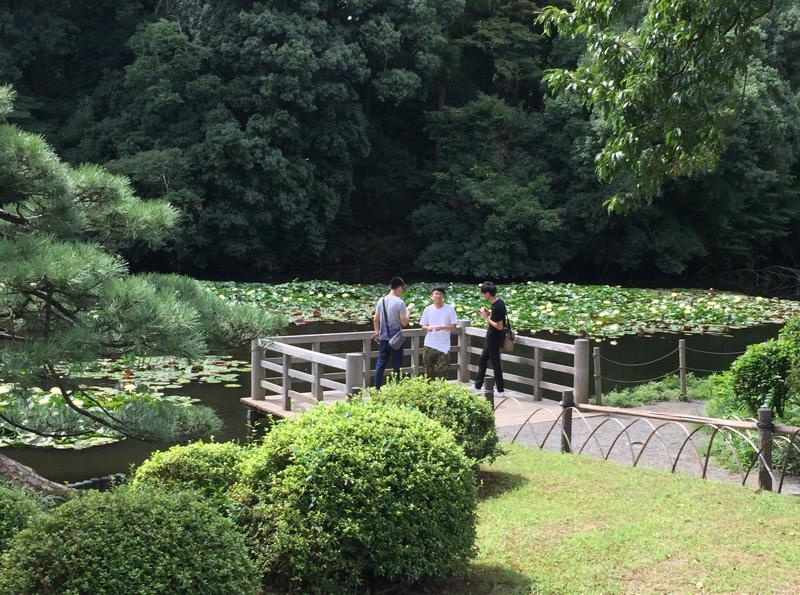
designed the iris garden with its trailing pathways and fishing spots especially for the empress. As it was September, we had missed the beautiful iris that bloom in June and July, but the autumn colours were beginning to appear. This garden is amazingly beautiful all year round. Lesley remembers it as one of her favourite places in Tokyo when she lived in Shibuya from 1982-86. Of course this inner garden is not a fishing spot today but the ponds are kept stocked with colourful carp for visitors to see.
There were pale yellow lotus blooms on the surface of the pond and the environment definitely had a peaceful air about it. People were speaking in hushed voices, not wanting to disturb the stillness. After a short time, we made our way back to the wide pathways and found our way out via the tori gates. We were heading to Harajuku, within walking distance.
It was extremely hot and humid, especially out in the open spaces and roadways. We were coming to the end of our water supplies,
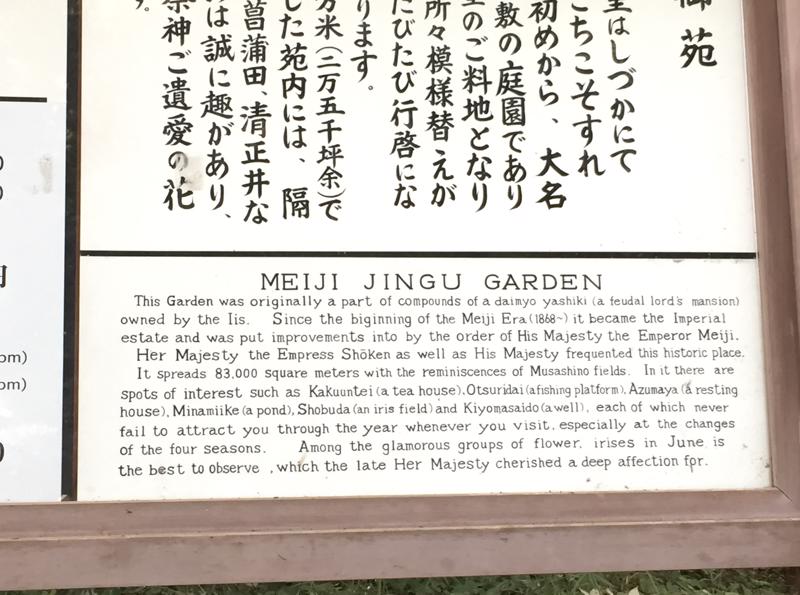
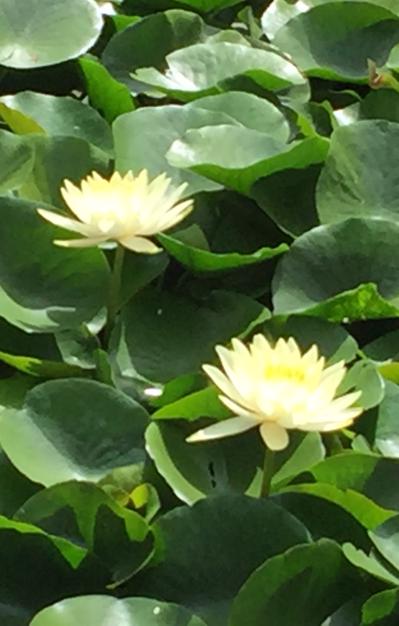
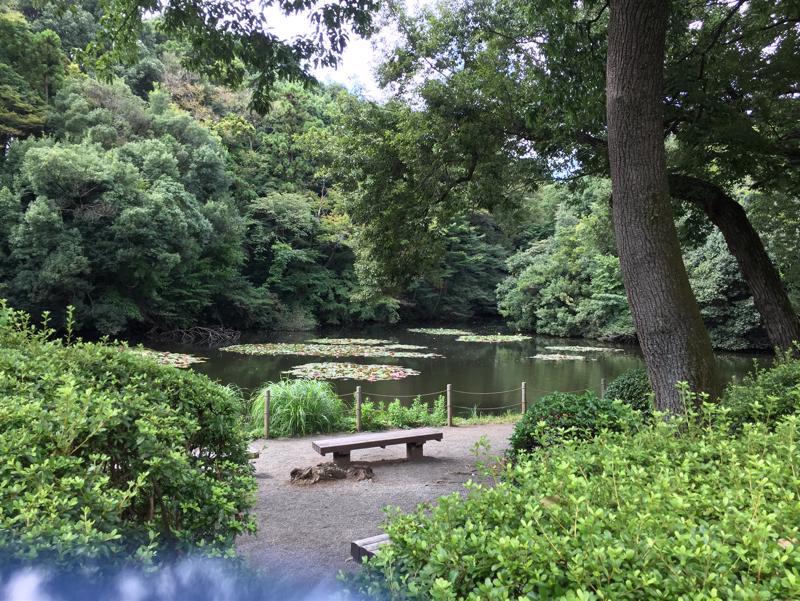
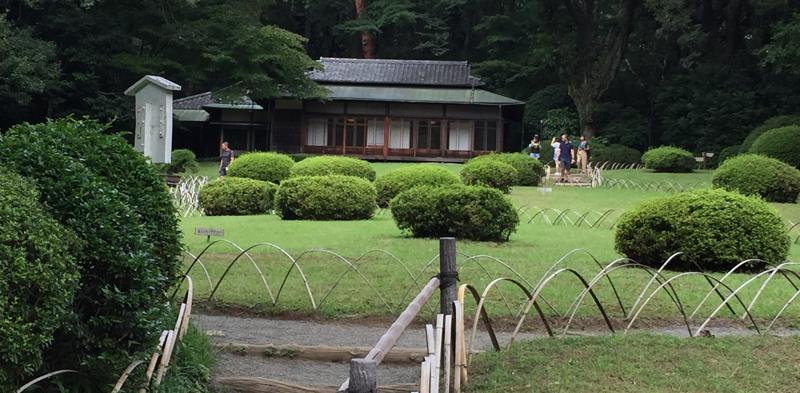
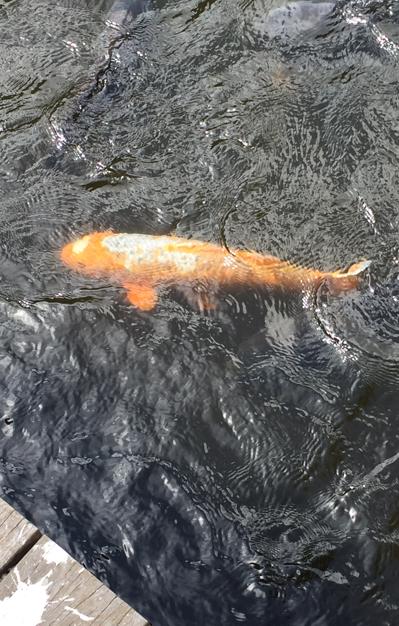
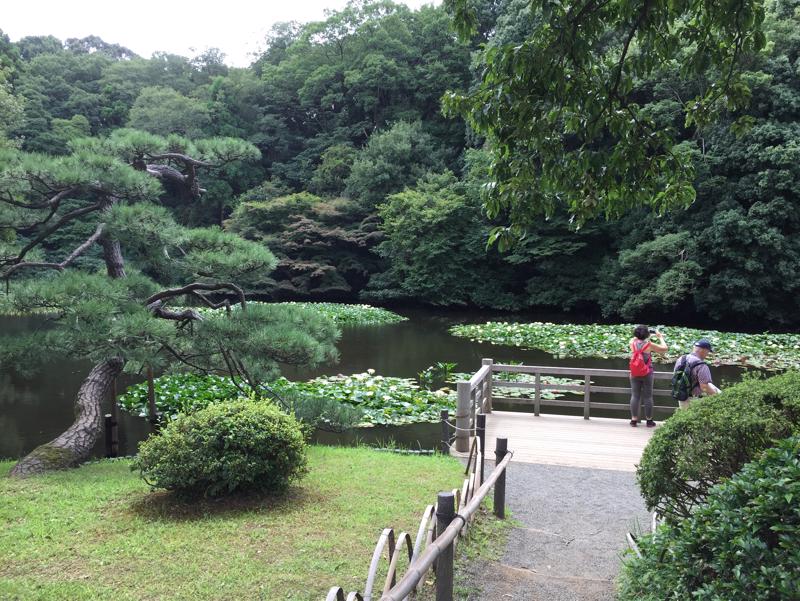
again, but thought we'd have coffee (and water) at a cafe somewhere. Harajuku is a very popular destination in Tokyo, with a myriad of interesting shops and restaurants. We came upon a Shinto festival (matsuri) with dozens of Japanese dressed in traditional costumes and some carrying a large mikoshi - a portable shrine. They believe they are carrying a deity in it during a festival. The mikoshi resembles a miniature building, with pillars, walls, a roof, a verandah and a railing, and depending on how large it is, there may be many men or women who lift and carry it. Lesley took a few photos of the mikoshi and the bearers.
We also saw a Shinto priest with a high black puffy hat. These men may have daytime jobs. Being a Shinto priest is not a permanent role in Japan. When Lesley was teaching in a high school in Kyushu, one of the teaching staff was a Shinto priest, who performed ceremonies on weekends at his family's shrine where he lived. As he was the
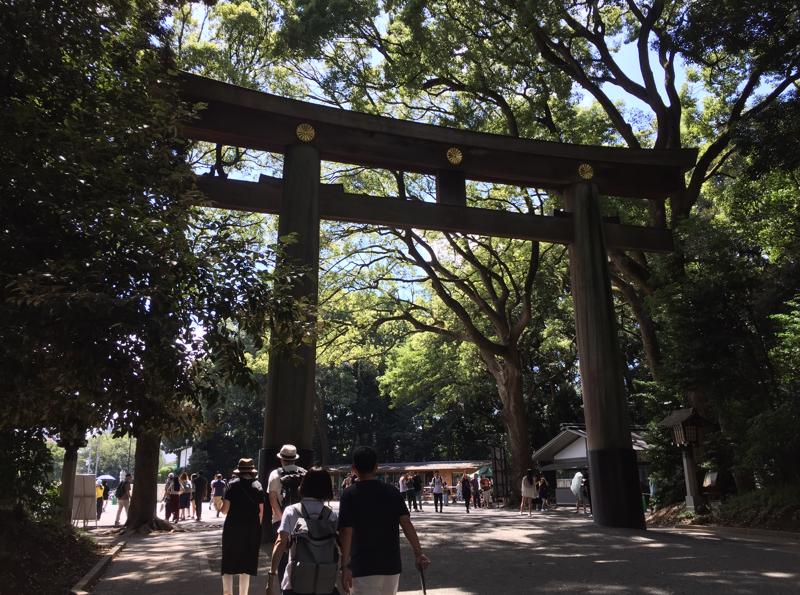
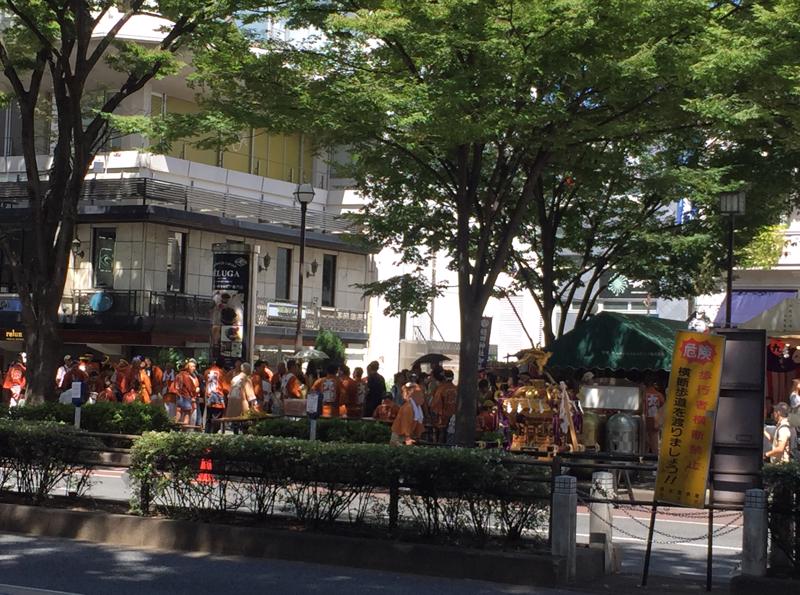
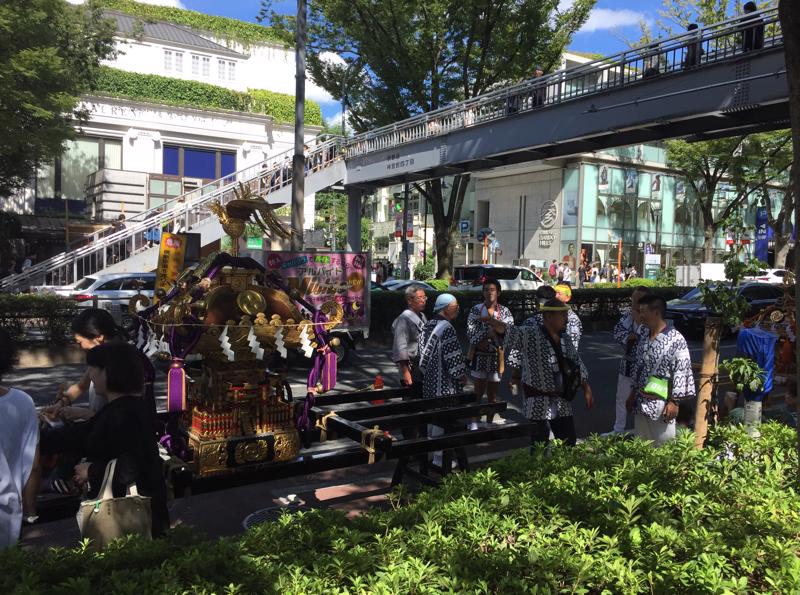




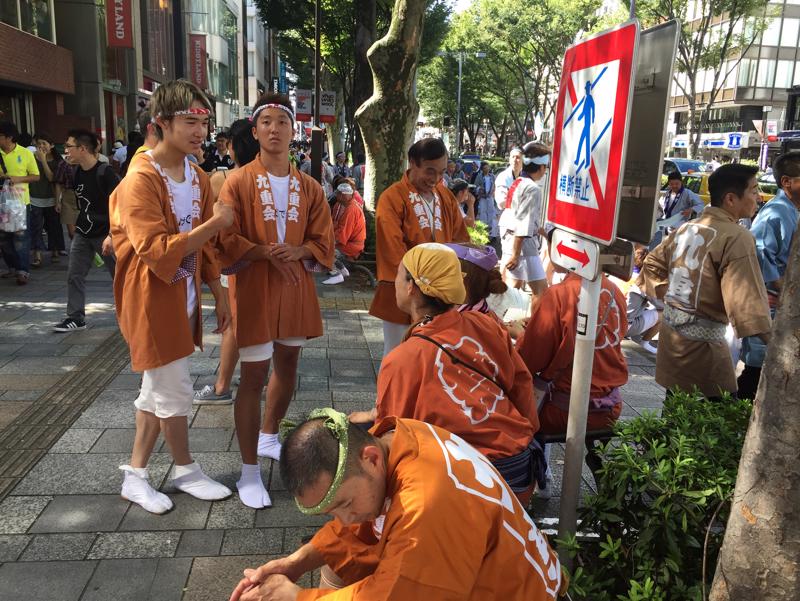
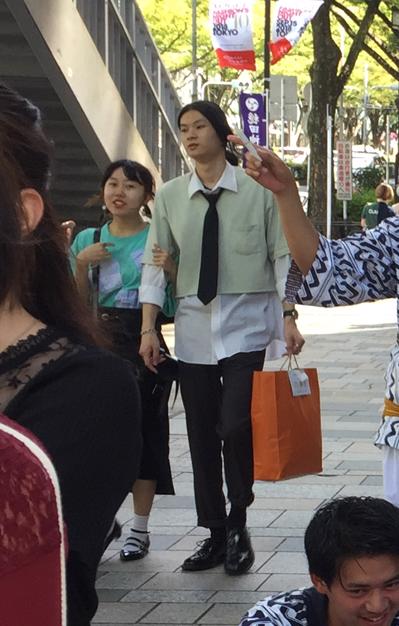
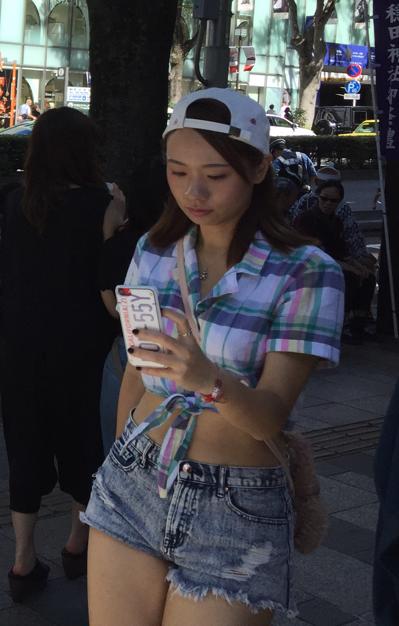
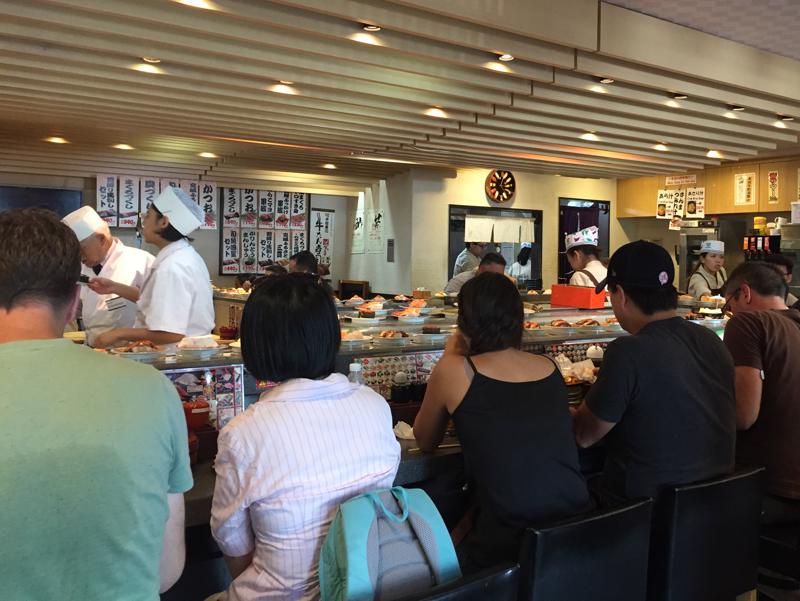
eldest son, he had the responsibility to carry on the family tradition of being the priest at their little shrine. His father and grandfather had also been Shinto priests.
By the time we arrived, it seemed that the matsuri was coming to an end. The parade and the chanting of the revellers was over. Everyone was taking a rest, sitting, standing, chatting, laughing and just enjoying being out in the sunshine and being together.
We found a popular sushi train restaurant and waited in the queue to be seated at the bench. The sushi was delicious!
Lesley was delighted to find the Japanese cultural store where she had been before. All kinds of ceramics, chop sticks, tablecloths, kimonos were on display. Prices as before were reasonable, so Lesley decided to make this her gift store and bought various items to take home.
That evening we walked a few blocks from our hotel to find the night life - making sure not to get lost. Lots of people, people, everywhere!

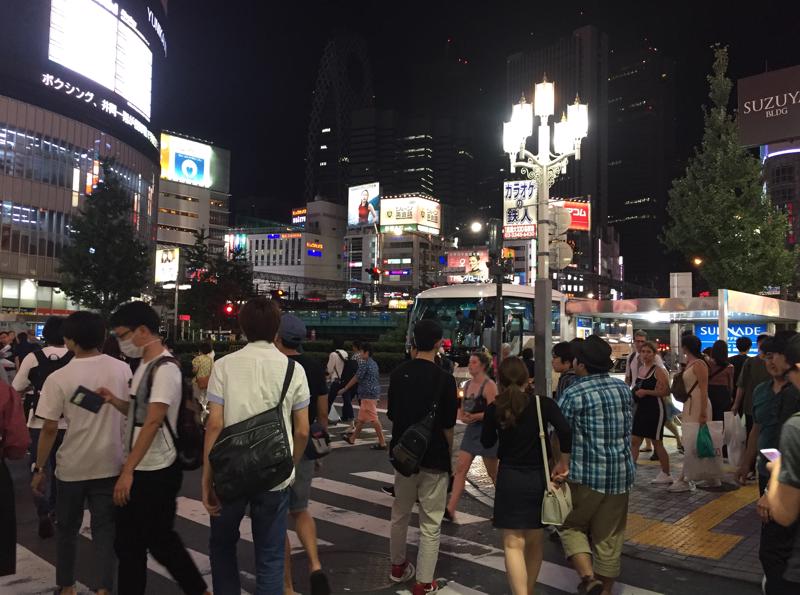

1.
Day Two - Into Tokyo
2.
Day Three - Imperial Palace
3.
Day Four - Meiji Shrine
4.
Day Five - Yoyogi
5.
Day Six - To Hakone
6.
Day Seven - Mt Fuji Sightseeing
7.
Day Eight - En Route to Kyoto
8.
Day Nine - Kyoto Sightseeing
9.
Day Ten - To Nagoya
10.
Day Eleven - Inuyama Sightseeing
11.
From Day 12 - To the Cruise Ship
12.
From Day 18 - From Korea
13.
From Day 23 - To Sakhalin
14.
From Day 25 - To Otaru
15.
From Day 29 - Farewells
Share your travel adventures like this!
Create your own travel blog in one step
Share with friends and family to follow your journey
Easy set up, no technical knowledge needed and unlimited storage!